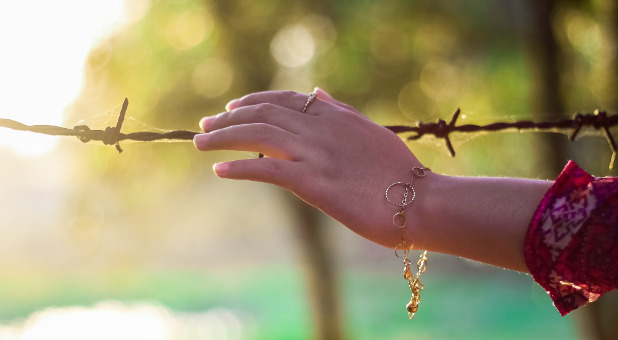Top Fashion Mag Encourages Women to Awaken Their Inner Witch
Whether the #MagicalResistance or The Handmaid’s Tale, the age of the witch is upon us, top fashion magazine Vogue proclaims.
“Women across the globe are actively using the word ‘witch’ as a way to describe themselves because the witch is waking,” third-generation hereditary witch Lisa Lister says. “The part of us that’s been anesthetized, domesticated, tamed and kept numb by food, shopping, alcohol and drugs is now awakening within us. We are remembering the dismembered parts of being a woman—who we all were before patriarchy put all our fierce and feminine powers into the darkness, called them taboo and then taught us all to be afraid of the dark.”
Lister points to the poignant popularity of Hulu’s televised representation of The Handmaid’s Tale, based on the book by Margaret Atwood. Fans continually praise the show for its relevance, and Lister sees the parallels.
“It’s interesting times—politically, environmentally and socially. But it’s also exciting times because this is the witching hour.”
The Week reports Atwood was inspired by 17th-century Mary Webster, who was accused of witchcraft.
Bridget Marshall, an associate professor of English at the University of Massachusetts Lowell describes Webster’s story:
Hadley is a small, small community of Puritans. Church is pretty central to their lives. There’s also a baseline level of absolute acceptance of, and belief in, witchcraft—that it’s happening, that witches are talking to the devil and that the devil is active and walking around in New England causing trouble for the Puritans.”
“In January of 1685, Philip Smith, a leading light of the community of Hadley, falls very ill,” Marshall continues. “He is very involved in the government, very involved in the church, a very well-respected man. The community says, ‘Wait a minute, why is Phillip Smith suffering these torments?’ In the Puritan mind, they don’t know what’s happening [so] they think it must be a witch. If someone who is so good and so pious could be in such pain and such torment, there must be a witch involved. They very quickly draw a line to Mary Webster.
Local farmers claim that their cart horses sometimes refuse to go past Webster’s home, which is on one of the main roads. But, if the man goes inside and beats Mary, then the horse will go past. “So, the idea developed that her supernatural powers could be stopped if they somehow physically assaulted her,” Marshall says.
As Atwood’s characters fight for empowerment among an abusive patriarchy, Lister says that the desire to achieve goals within one’s own power translates to magic.
“Every woman is a witch, whether she knows it or not. She’s cyclic, she’s powerful, she can embrace nature to heal herself and her community. In other words, she is magic,” Lister says.
Despite the feel-good mantra Lister preaches, those who have been set free from the demonic occult of witchcraft like Beth Eckert know the true destruction that lays wait.
“Without the love of God, we cannot understand how to overcome witchcraft. We will be paralyzed with fear or worse—with denial. We will not be able to discern when it is happening or why. We will be filled with blame and judgement towards others. Only God has the answers to the questions we have, and only God can give us real, viable solutions. Love is the ultimate power to overcome witchcraft, and without it, we are not in alignment with God,” Eckert says. {eoa}
















































